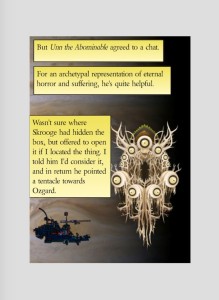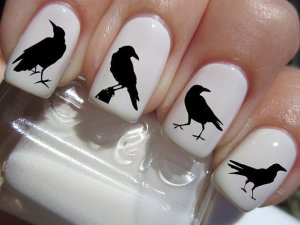Happy New Year to everyone the world around. I realize that in other cultural calendars the year begins at different times and that in some ways a new year is an arbitrary thing. If I look at all the things that happened in 2018 it definitely began with a bang last January (a car accident) and ended with settling into a new place.
Because of a very tumultuous year ,many things were sidelined including my writing and my blog. In an effort to have posts appear more regularly I have asked some writers to do a guest post. The first one is by DD Barant. Take it away, Don.
Thanks, Colleen, for letting me guest. Your earlier post about life sucking you into a vortex got me thinking−you see, I know a little about the Life-Sucking Vortex and how much its suckage can suck. I also know something about Alice−which is the subject of the short-story collection Alice Unbound: Beyond Wonderland, edited by you−and now I’m going to stop addressing Colleen directly because it sounds like I’m mansplaining.
When I first heard about this collection, I was in the midst of my own Alice-related project. I wanted to submit something, but didn’t. Partly because my project is a webcomic, not prose−but mostly because of the Life-Sucking Vortex.
When you get to a certain age, you’re abruptly at risk for the Big Trifecta: parents dying, divorce, and health problems. Guess who nailed all three? (Hint: it me.)
And suddenly, like Alice, I was falling.
The main difference between the Rabbit Hole and the Vortex is that the Vortex tends to be rather aggressive. It grabs you and sucks you down, and while you’re in there you tend to smash rather a lot into other things. What those things are doesn’t really matter; the point is, you usually wind up breaking them or they break you.
But eventually−like Alice−you find yourself somewhere else. Confused, shaken up, hopelessly lost. And you can either sit and drown in your own tears, or get up, fortify yourself with whatever’s at hand, and go have adventures.

Barant created strange creatures from second-hand toys as he escaped the vortex. Copyright DD Barant
Like Alice, I did both. Like Alice, the experience was transformative: I made myself into an artist. I’ve been a prose writer my whole life, but I love comics and have always wanted to make them. I can’t draw worth a damn, so I taught myself how to manipulate digital images instead. I downloaded hundreds of public domain images from online museums and art galleries, scoured the internet for Creative Commons photos, took stills from old black-and-white films, made bizarre creations out of second-hand toys and stuffed animals and took pictures of them.
Alice had no control over which unusual creatures she encountered, but I did.
My Alice goes by the name Liss. She comes from an alternate fictional world known as an

Liss searches for other Alternities. Copyright DD Barant
Alternity, one where Alice Liddell refused to believe that her childhood adventures were a dream, and devoted her time to the study of the occult. She grew up to be a powerful eyemage under the tutelage of Londinium’s most powerful magician, until she was forced to flee her own reality. These days, she works as an interdimensional thief, pilfering alternities for private collectors who’ll pay through the nose for a genuine artifict−a prized item from a fictional universe.
She does most of her business in a multiversal bar known as The Crossover, neutral ground for all manner of smugglers, thieves, and assassins. She uses a flamingo as a weapon.

Help from strange beings in the Alternity. Copyright DD Barant
Everybody has their own Vortex, sooner later. It sucks you in and whirls you around, you smash into things and things smash into you. We all live in worlds of both chaos and order, and this is the chaotic bit. But as dire and deadly as chaos can be, don’t forget that it’s also what makes freedom possible. That can be hard to see in the middle of all that whirling debris . . . but it’s there. When I look at my webcomic, at the mishmash of styles and images and ideas and characters, I see that chaos; but I also see how I’ve used it, nudged it here and there, made this piece bounce off that piece to wind up in a new orbit, got it to twist and swoop and lunge in a particular way.
You can’t control the Vortex. But you can teach it to dance.
THE CROSSOVER is now up at : http://thecrossover.thecomicseries.com/. You can find more information about it at my blog, on Facebook at The Officialicious DD Barant page.
DD Barant is best known for the Bloodhound Files series: Dying Bites, Death Blows, Killing Rocks, Better Off Undead, Back from the Undead and Undead to the World. He also writes science fiction under the pseudonym Don DeBrandt: The Quicksilver Screen, Steeldriver, Timberjak, and V.I., as well as numerous pop-culture essays for Smartpop Books, and the Buffyverse media tie-in Shakedown (an ANGEL novel).
As Donn Cortez, he’s written five CSI: Miami novels, two CSI: Vegas novels, a murder mystery set at Burning Man (The Man Burns Tonight) and a thriller (The Closer) which became a bestseller in Germany. (The sequel, Remote, is available as an e-book in English).
As Dixie Lyle, she writes the paranormal animal cozy series The Whiskey, Tango and Foxtrot Mysteries: A Taste Fur Murder, To Die Fur, A Deadly Tail, and Marked Fur Murder.
Books: Steeldriver: https://www.amazon.ca/Steeldriver
Timberjak: https://www.amazon.com/Timberjak
V.I.: https://www.amazon.com/V-I-Intelligence
Bloodhound Files: https://www.amazon.com/Dying-Bites-Bloodhound-Files
WTF Mysteries: https://www.amazon.com/Taste-Fur-Murder-Whiskey-Foxtrot/
Remote: https://www.amazon.com/Remote-Suspense


























